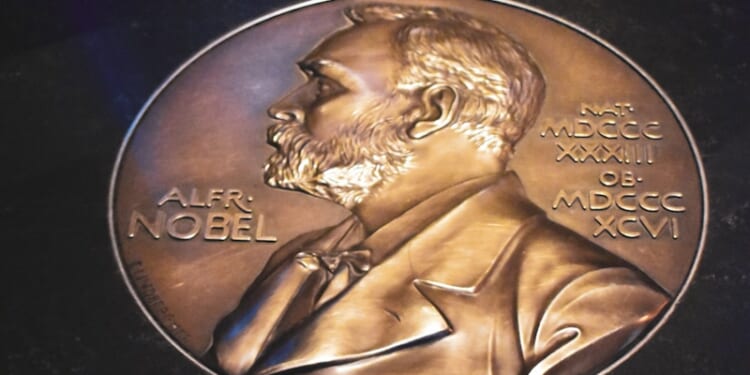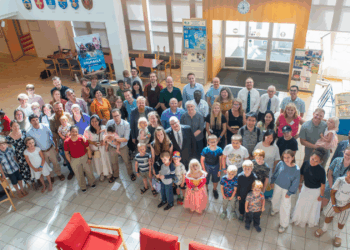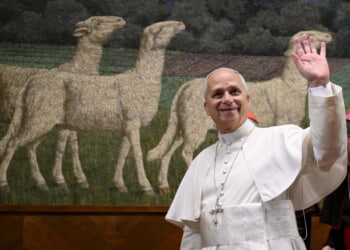Terence Kealey is writing a book provisionally titled ‘Endogenous Growth Nonsense’.
The economics Nobel prize has this year been split three ways between Joel Mokyr of Northwestern University, Philippe Aghion of the Collège de France, and Peter Howitt of Brown University for, in the words of the Nobel Foundation’s citation, “having explained innovation-driven economic growth.” These three prizes follow in the footsteps of the Nobel awarded in 2018 to Paul Romer of NYU Stern School of Business “for integrating technological innovations into long-run macroeconomic analysis.”
Yet these laureates have not actually explained innovation-driven economic growth, nor have they credibly integrated technological innovations into long-run macroeconomic analysis. Rather, as The Economist complained on the 12th April 2018, “Economists understand little about the causes of growth”, and these four prizes have only highlit the economists’ lack of understanding.
The economists’ error, when studying economic growth, has been to modify the neoclassical model of perfectly competitive markets. That model has dominated economics since the marginal revolution of the late 19th century, but when studying economic growth it shouldn’t be modified, nor should it be tossed aside lightly. It should be thrown with great force.
The neoclassical model envisages a world where an infinity of producers supplies an infinity of interchangeable goods to an infinity of customers. In such a world there can be no actual profits, because those have been competed away. The neoclassical model also assumes a world of perfect knowledge—perfect knowledge being the magical assumption that, at zero cost, everybody knows everything that everyone else knows. But in such a world there can be no research and development (R&D), because that is undertaken only when real entrepreneurs in the real world prospect for real profits by acquiring knowledge others do not have.
Beholden to the model, but aware it bears zero relevance to the real world of R&D, our four Nobel laureates have modified it. Paul Romer assumed that entrepreneurs can find profit by exclusion: Romer asserted that entrepreneurs will do R&D if they can monopolise their discoveries by patents or hide them in secret.
But the great fact of economic growth is that entrepreneurs are inclusive: they share their discoveries. As Robert Allen of Oxford University showed in a key paper in 1983, invention is collective, even between competitors—especially between competitors—because they’re the ones who understand each other. Allen found, for example, amongst the blast furnace operators in North Yorkshire during the 19th century, that “if a firm constructed a new plant of novel design and that plant proved to have lower costs than other plants, these facts were made available to other firms in the industry and to potential entrants.” That was routine behaviour.
The first person to appreciate the collectivity of R&D was Ludwig Fleck who, in his 1935 book The Development and Genesis of a Scientific Fact, wrote that for researchers “thinking is a collective activity.” Fleck was an amazing man. A Jew by faith and a microbiologist by profession, he was so gifted that though he was incarcerated in both Auschwitz and Buchenwald, his life was spared to allow him minister to the prisoners’ infectious diseases, particularly typhus.
Yet it is as the pioneering sociologist of science that he is now remembered.
Fleck’s insight was that scientific knowledge is tacit, not explicit. If it were explicit, we could all pick up a scientific paper and follow its methods. But scientific knowledge is in fact tacit, and only nuclear physicists can understand nuclear physics, and only biochemists can understand biochemistry: a person has to be there, at the bench, doing the experiments with their own hands, before they can enter a rarified world of specialised knowledge.
And once a person has entered a rarified world of specialised knowledge, they discover it to be a collective of shared knowledge: in the words of Jason Potts of the Royal Melbourne Institute of Technology, initiates enter into a ‘knowledge commons.’ And, in a knowledge commons, researchers—however competitive with each other—share their thoughts. As the leading sociologist of science, Robert Merton, wrote, research—even commercial research—is communist. And as the historian Alexander Broadie wrote of the Scottish enlightenment: “thinking was regarded as essentially a social activity. People thought with each other, that is, they shared their thoughts [italics in the original].” Or as Newton protested in 1675, defending himself from having plagiarised Hooke, he and Hooke—as competitors—had naturally shared “common thoughts”.
Of course there are risks in sharing thoughts but, with every additional sharer, the risk to each entrepreneur of losing competitive advantage by spillover increases only arithmetically. Yet new advances in technology are largely the rearrangements of knowledge, so with every additional sharer the benefits increase logarithmically. Smart firms share knowledge with their competitors. Non-sharers go bust.
Aghion and Howitt’s tragedy is that they recognise knowledge as tacit, but their recognition was not based on the empirical observations of Fleck and Merton: rather, it was a mathematical manoeuvre to circumvent the problems of the neoclassical model. Romer’s manoeuvre was to have modelled research as proprietary by means of patents, Aghion & Howitt’s was to model it as tacit and therefore, purportedly, private: in their model, an entrepreneur can make money because only they know what they know.
In support of their model Aghion & Howitt have invoked Schumpeter’s ideas of creative destruction, but their model was never rooted in the central reality of tacit knowledge (namely that it is shared), rather it was rooted in mathematical legerdemain. Of course companies will treasure proprietary knowledge in the moment, but the core dynamic of modern economic growth since it started in medieval and renaissance Italy is that entrepreneurs share knowledge. Indeed, the core dynamic of the Rise of the West, no less, has been the West’s adoption of knowledge sharing. Yet these Nobel laureates are so removed from the empirical basis of our modern world that Mokyr, for example, has claimed there are only three examples of collective invention in history.
Which matters, because Romer, Mokyr, Aghion and Howitt prescribe the wrong policies.
In the real world, where entrepreneurs exchange knowledge voluntarily, there is no market failure in research (which is why the UK and U.S. industrial revolutions happened under laissez faire.) But in the economists’ models there is, purportedly, market failure in research—companies can’t keep their advances to themselves, so purportedly they underinvest in it. Which purportedly justifies governments funding universities generously (thus assuaging a ravenous lobby), which purportedly justifies patents (thus legitimising that particular form of rent seeking), and which purportedly justifies globalisation (thus gratifying the plutocrats.)
These purported justifications are based, ultimately, on the false premise of perfectly competitive markets.
They may have modified that premise, but it was nonetheless our four laureates’ ur-premise. And how wise they were in their choice of premise, because economists who eschew it are not rewarded. Richard Nelson of Columbia University was the greatest economist of science in living memory, and here is an extract from his obituary by Professors Ben Martin and Edward Steinmueller, “Nelson’s growing alienation from the neoclassical economic paradigm that dominated economic policy during the 1980s and 1990s arguably limited his direct influence in the United States [so] there was to be no Nobel Prize.”








!['This is Just the Beginning... if People Don't Wake Up...' [WATCH]](https://www.right2024.com/wp-content/uploads/2025/09/This-is-Just-the-Beginning-if-People-Dont-Wake-Up-350x250.jpg)








